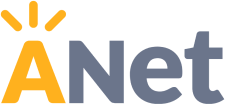by Clarice Clash, with Dorie Withey and Rebecca Sela
A thoughtful, balanced assessment strategy is about more than just testing: it’s about creating better experiences for our teachers and students.

In our careers as teachers and administrators—and now in our roles with ANet supporting dozens of schools and districts—we've seen first-hand the challenges school systems face when they don't have a clear assessment strategy: over-testing, assessments used for the wrong purpose, a culture of accountability rather than growth, and poor-quality assessments that don't give teachers the data they need.
Common Assessment Challenges Solved!
Implementing the lessons ANet has learned from our work in over 1,000 schools, we’ve helped school systems address three major problems:
-
If a system had a volume problem, we reduced the number of tests and increased instructional time by up to 5 days.
-
If a system had a purpose problem, we increased the percentage of instructional assessments from 5% to 100%.
-
If a system had a quality problem, we reduced the number of low-quality assessments across their system from 100% to 33%.
The first key: A clear assessment purpose
Assessment data gives us information—lots of different kinds of information that has lots of different implications for different stakeholders. It’s complicated.
The first step to a thoughtful assessment strategy is to gain clarity about assessment purpose, which, in turn, will determine cycle length and timing.
| Purpose | Cycle Length | Timing |
|---|---|---|
| Evaluative: Determines the effectiveness of a course or program, strategy, or teacher | Semester, year | End of major units, end of year |
| Instructional: Determines students' strengths and weaknesses in a particular domain or standard | Moment-to-moment to 4x per year | Daily to mid-cycle |
| Predictive: Assesses each student's likelihood of meeting some criterion score on the end-of-year tests | Semester, year | Beginning, mid cycle |
The second key: A vision for assessments
What do you want to be true about how your district, schools, leaders and teachers talk about assessments and the role they play in teaching and learning? Do you prioritize evaluation and accountability? Would you like to focus on supporting strong instruction? Creating an assessment vision provides clarity and direction for decision-making and planning. Your vision for assessments reflects your priorities and values and will…
-
Help you make decisions about which assessments to preserve and change
-
Lead to direct action
-
Provide a common language and observable indicators
The next step is to conduct a comprehensive review of all the assessments currently used in your school or system so you know where you’re starting. Does your existing strategy have gaps? Perhaps your vision calls for both instructional and summative assessments, but you only use various summatives. Are there redundancies? Maybe you can cut some.
For each assessment reviewed, determine:
-
Does it serve instructional, predictive, or evaluative purposes?
-
Is it short-cycle, interim, or summative?
-
What is its quality level? (Here’s a checklist you can use for interims.)
With all three keys, you can unlock valuable rewards.
Systems that have refined their assessment strategy using these three keys have reduced the number of tests, increased instructional time, and improved the overall quality of assessments. High-quality and purposefully-aligned assessments provide teachers and leaders reliable data to inform instructional decisions for student success.
Want more detailed guidance so you can lead your own overhaul?
Download a step-by-step white paper: Teaching Comes First: How School District Leaders Can Support Teachers, Save Time, and Serve Students with a New Vision for Assessments.

